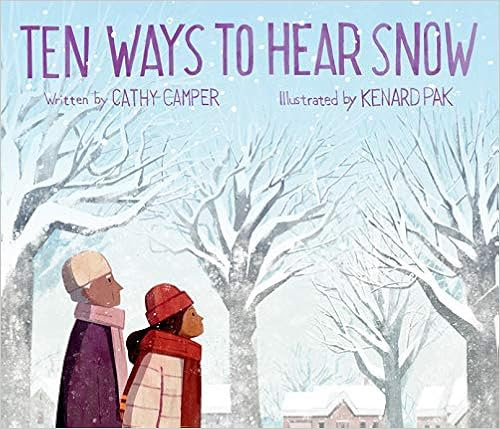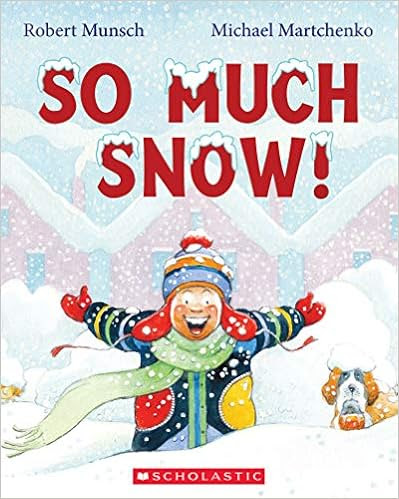I originally created OLLIs when schools in my province of British Columbia shut down last spring due to Covid19. While we are now back in class, I know there are many districts still juggling virtual and in-class support. These OLLIs can be used both in class and virtually person. Either way, I hope you find some ideas that you can use with your students to lighten your load just a little this year!
Here is a list of the previous OLLI lessons and anchor books in case you missed any of them:
OLLI#1 (The Hike)
OLLI#2. (If I Could Build A School)
OLLIE#3 (Mother’s Day)
OLLI#4 (Everybody Needs a Rock)
OLLI #5 – (WANTED: Criminals of the Animal Kingdom)
OLLI #6 – (Up in the Garden and Down in the Dirt)
OLLI #7 (All About Feelings – “Keep it! – Calm it! – Courage it!)
OLLI #8 (I’m Talking DAD! – lesson for Father’s Day)
OLLI #9 (Be Happy Right Now!)
OLLI #10 – (Dusk Explorers)
OLLI#11 (If You Come to Earth)
OLLI #12 (Map of Good Memories)
OLLI #13 (Harvey Slumfenburger)
OLLI #14 (New Year’s Resolutions)
OLLI #15 ( 100 Things That Make Me Happy)
OLLIE #16 (Leaving Our Heartprints)
THE INSPIRATION:
It doesn’t often snow on the west coast of BC, but this past weekend, a rare winter storm blew through our neck of the woods. Likely not a “storm” by East Coast standards, but for people in the lower mainland, even a few centimeters results in a whole lot of snow joy! Since Covid restrictions have been put in place, there aren’t many opportunities for community gatherings. This past weekend, however, I think every single person, young and old, two legged and four, emerged from their indoor bubble and ventured outside to walk, pull or ride a sled, build a snowman, or make a snow angel. To add to the snow excitement, the stars aligned with the snowfall occurring on Family Day long weekend and Valentine’s day. Pure magic. So I thought it best to capture this rare occurrence in this week’s OLLI!
THE ANCHOR BOOKS:

Ten Ways to Hear Snow – Cathy Camper
This story follows a girl on a walk to visit her grandma the morning after a big snowfall. Her grandmother is loosing her sight and Lina is going over to help her make some traditional Lebanese food. Along the way, she notices various ways to hear the new snow that’s all around her. I love anchor books you can use for several different lessons. SO many curriculum connections in this book including awareness and attention to nature, onomatopoeia, empathy, family and cultural traditions, cultural food, and connection to grandparents. This 2020 release is definitely being added to my Reading Power “connect” list, as well as my Powerful Understanding “SELF” – grandparents and “OTHERS” – empathy.

Snow Sounds – An Onomatopoeic Story – David A. Johnson
Sweep, crunch, swoosh, scrape . . . All night long, snow falls silently, blanketing the world in white—and a creating a very noisy day! This very simple story is told using only sound words. A perfect anchor book for teaching onomatopoeia and highlighting the sounds of snow.
Lesson – Option 1 – The Sounds of Snow
It was hard to choose just one lesson to for this anchor book – it could be used for multiple different purposes. I decided to focus on the sensory details because I liked the idea of the different sounds of snow.
- Ask students what snow fun they experienced over the long weekend. Invite students to share some of their experiences with a partner or to the whole class. Don’t forget to share some of your own snow stories!
- Reflect on the fact that you had been focusing on snow activities, but that you now wanted to narrow the focus to snow sounds. Explain that, when you first think about “the sound of snow”, most people might say “Well snow doesn’t make any sound.” But invite students to think of sounds connected to the activities they just shared. (ie Action is sledding – sound is “whoosh!”, action is walking – sound is “crunch!”
- Explain that a sound word is not the action but the sound connected to the action. Depending on your grade level, you can introduce the term onomatopoeia (when a word describes a sound and actually mimics the sound of the object or action)
- Invite students to share some of their action-sound connections. Record them on the board or chart stand
- Tell the students you are going to read a story about a girl who discovers 10 different snow sounds.
- Read the anchor book Ten Ways To Hear Snow YouTube Read Loud HERE
- Optional additional anchor book: Snow Sounds YouTube Read Aloud HERE
- After reading, invite students to add the sound words from the book to your list. Point out that some of them aren’t actual words but groups of letters that make the sound. Invite students to add new sound words to the list you started before the story.
- Pass out Snow Sounds template and invite students to brainstorm snow “actions” and “sounds”
- After their templates are complete, model how to use some of the sounds to write a Snow Sounds poem:
Snow Sounds – A. Gear
Pssssh! Snow falls gently to the ground
Crunch! Crunch! Boots make noisy tracks
Beep! Beep! Cars shout at each other
Wheeeee! Kids sled down the slippery hill
Ouch! Someone falls on the ice.
Sccccrrritch! Screept! the shovel clears the sidewalk
Option 2 – The Six Senses of Snow
While the previous lesson focuses on only the sounds of snow, this lesson expands into all of the senses. It can either be taught by itself or as an extension to the previous lesson.
- Ask students what snow fun they experienced over the holiday. Invite students to share some of their experiences with a partner or with the whole class. Don’t forget to share some of your own snow stories!
- Ask students what the five senses are. List them on the board or chart stand.
- Explain that the five senses are used in science when we are describing how humans receive sensory information. Explain that the five senses are also used in writing when a writer wants to create a visual image. Writers often add a 6th sense by adding emotion and feeling into their writing.
- Create a 6 box chart on the chart stand or board – label each box with one of the senses, including emotion.
- Begin with sight and ask the students to think about what things they saw while outside in the snow. Brainstorm and record words into one box.
- Move to the next box and ask students to think about the sounds of snow. What sounds do you remember hearing when you were outside in the snow. Record their ideas in the box. Depending on your grade level, you may introduce the technical term for a sound word is onomatopoeia.
- If you haven’t already read the story, tell the students you are going to read a story about a girl who discovers 10 different snow sounds.
- Read the story Ten Ways To Hear Snow aloud (Youtube Read Loud HERE) or Snow Sounds – An Onomatopoeic Story Youtube Read Aloud HERE
- Review the sound words from the story. Add them to The Six Senses of Snow list
- Depending on your grade, you can either continue brainstorming the other senses or invite the students to continue independently. You can download the template “Six Senses of Snow” here
- These sensory word collections can be used for turning into a short descriptive paragraph or a sensory poem.
- For poetry, students can select one idea from each of their senses plan and add details to it:
The Six Senses of Snow by A. Gear
I see the snowflakes fall, covering the ground with a blanket of white.
I hear the whoosh of the sled and my sister’s squeals as we fly down the icy hill.
I taste the cold metal of snow melt on my tongue as it turns into water
I feel the sting of cold, wet mittens on my fingertips
I smell the cold air, crisp and fresh and damp.
I feel the sadness that the snow won’t last forever.
Or students can create more of a list poem with their snow senses:
Snow Senses – A. Gear
Snow excites
Snow sprinkles
Snow sparkles
Snow whooshes
Snow crunches
Snow slips
Snow soaks
Snow hurts
Snow sloshes
Snow scrapes
Snow rolls
Snow whispers
Snow sloshes
Snow melts.
Other Snow Lessons (see additional snow books below)
Making Connections
After the rain and slush have washed the snow away, our memory pockets remain filled with new snow stories ready to share. So this week, why not spend some time making connections and capturing those memory pocket snow stories? Read any of the books listed above or below and invite students to make connections to their snow experiences.
Visualizing –
I often use books about seasons and weather when I’m teaching or practicing visualizing. Choose any of the recommended books below, cover the cover, read the story and invite students to visualize while you read. Pause after a few pages and invite them to either turn and talk about what they visualize, or they can do “quick pics” on a paper.
Event Stories –
Personal narrative stories that retell an event are often how I teach students about transition words.
- After reading one of the snow books, invite students to think about their “snow day” activities. Invite them to list them in order and tell their partner – retelling their day in the snow.
- Students can then use a 6 box or 4 box paper to record their day in sequence – ie – got dressed in snow gear, walked to the park, went sledding, fell off the sled, went home, had hot chocolate.
- Model adding transitions words to each box – Then, After that, Later on, etc.
- This plan can then be used for re-telling or writing their event stories. See the full lesson in my Powerful Writing Structures book – page
Additional Snow Books:
There are dozens of snow themed books, but for this particular lesson, I wanted to focus on more on realistic “memory pocket” stories of a recent snow fall, rather than the more imaginative “Snowmen at Night” types of stories.

Snow – Cynthia Rylant
Youtube Read Aloud Here (story start at 41 seconds)

My Winter City – James Gladstone

So Much Snow! – Robert Munsch

Snow – Uri Shulevitz

When Winter Comes – Discovering Wildlife in Our Snowy Woods – Aimee Boissonette
Perfect Snow – Barbara Reid

Red Sled – Patricia Thomas

Blizzard – John Rocco
YouTube Author Read Aloud HERE

Under and Over the Snow – Kate Messner
I hope you find some snow lessons that inspire you and your students this week!
